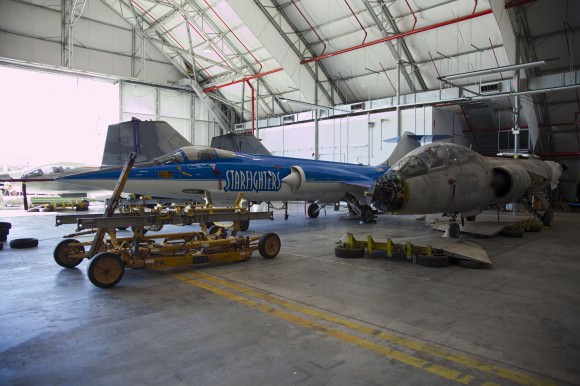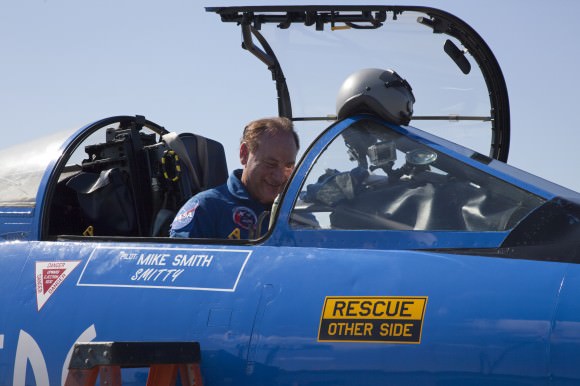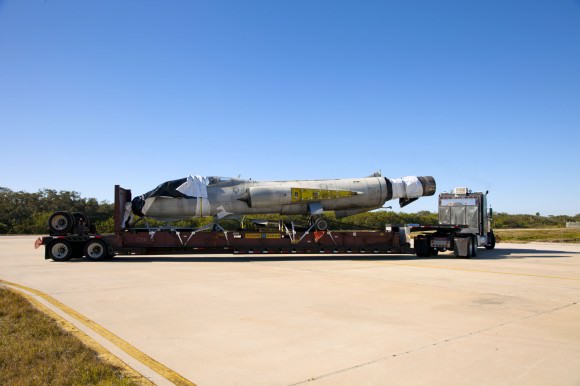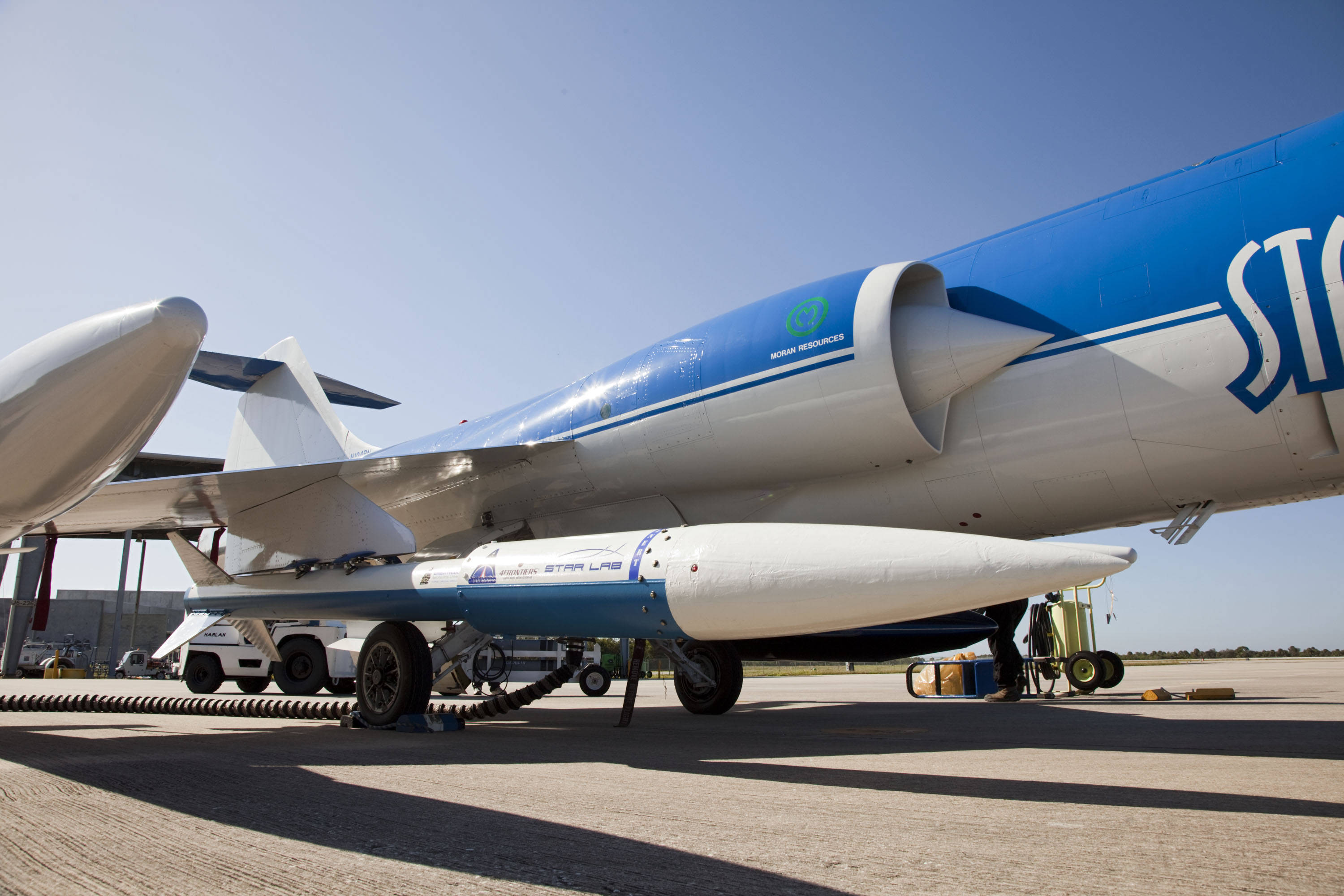[/caption]
Move over, Buck Rogers… The time has come for StarFighters, Inc.! Just a few days ago, the exclusive contingent’s final forces assembled at NASA’s Kennedy Space Center in Florida, ready to go on duty with a private company which will deploy them for research and microgravity training. Purchased from the Italian Air Force, these five new aircraft began their life as F-104 fighters, but as part of StarFighters, Inc. will pursue different venues as members of a nine plane squadron… One with a more peaceful goal.
According to owner Rick Svetkoff, this means there will always be aircraft available to fly for not only a variety of customers, but a variety of missions as well. The company will also be able to offer an additional aircraft on a single mission to serve as a “chase plane” to photographically document experiments.
“Now we’re in a position where we can really start operations,” Svetkoff said. “Before, we couldn’t do a lot of things we wanted to do.”
Under an agreement with Kennedy Space Center, StarFighters Inc. calls a hangar at the Shuttle Landing Facility home. The company’s goal is to serve as a research and development platform – one whose repertoire expands across a variety of venues such as “evaluating rocket and spacecraft in high-stress environments including high-acceleration and microgravity”. At this time, Embry-Riddle University and Space Florida are already on-board with the team.

These are not just any planes, however. The F-104s are capable of reaching an altitude of around 70,000 feet and speeds exceeding Mach 2. This means they can be engaged to launch small satellites into space and the 19-foot-long, 900-pound rocket lodged under the wings has already been tested. Additional test flights with the rocket will be carried out in February and the first launch is expected to happen during this summer. These launches are designed to take less bulky experiments into space, but not orbit. Once completed, the rocket will then parachute down to Earth and be retrieved from the ocean for recycling. According to Svetkoff, the company expects to use StarFighters to launch around 100 suborbital missions annually and in less than a year should begin launching nanosatellites with a similar method.

As futuristic as its name sounds, the F-104 Starfighter isn’t new. It’s a decades-old, supersonic aircraft which originally served during the Cold War to intercept Soviet aircraft. It was once dubbed “the missile with a man in it” because of its fast speeds and trim design. It was the concept developed by Lockheed Martin’s Kelly Johnson – who also designed the SR-71 and U-2. Some 50 years ago, the Starfighter also served NASA by helping to train astronauts in microgravity and sharpening their skills in high-speed flight.
“Anything an F-16 or an F-18 can do, we can do with this aircraft, performance-wise,” said Svetkoff who also commented that research and development flights could add another 100 missions to the StarFighter’s log annually.

It’s a great idea that isn’t going to end with just some experiments, though. As we progress and private companies realize the opportunities of working with NASA and launching humans into space, StarFighters can be used to train for microgravity and other implications – just as they have in the past. For now, the focus is on getting the planes cleaned and ready for work. This means careful disassembly of engines and other parts, cleaning and reassembly. The StarFighters will also get updated, too. There are new avionics packages available which will add digital displays. It may take as long as three months to complete the first, but the entire fleet should be ready in about six months.
“This shows a serious commitment,” concludes Svetkoff.
Original Story Source: NASA Kennedy Space Center News.

